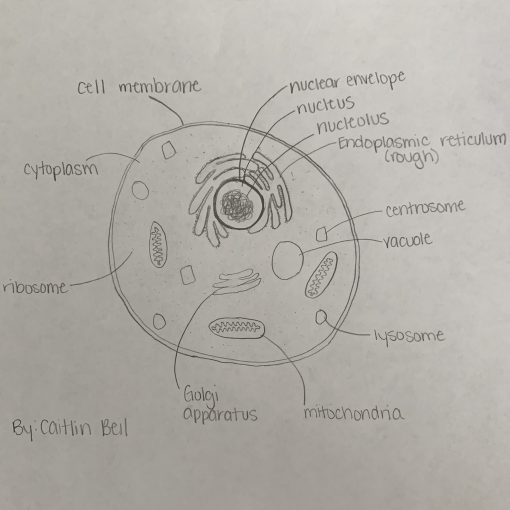A Biological Arms Race
Bacteria, in general, have a long history of causing illness among both human and animal populations with varying degrees of mortality. The discovery of antibiotics ushered in a new era in medicine, with many believing them to be a “magic bullet” that would cure almost any infection. However, bacteria and evolution had other plans in mind. The rise of resistance to existing antibiotics has fueled research into new generations of the drugs, which is countered by continual adaptations of bacterial species. While alternative treatments have found varying degrees of success throughout the years, antibiotics still remain the primary weapon against bacterial infections. As pharmaceutical companies and researchers work to stay one step ahead of bacteria, the world has begun to consider what a post-antibiotic era might look like.
The use of antibiotic agents has been seen throughout human history and passed to future generations through traditional medicine practices. However, it was Alexander Fleming who promoted research into the antimicrobial properties of Penicillium mold that brought antibiotics to the modern world. Fleming’s discovery in 1928 and the further development by Oxford University scientists led to the release of penicillin in 1941. This coincided with the escalation of World War II and battlefield usage led to significant decreases in fatalities. Production of penicillin increased rapidly and gained widespread adoption by the medical community (2). The first antibiotic resistant strains of bacteria were isolated within a year of penicillins release (3).
The medical community and society have facilitated the increasing incidence of antibiotic resistance in bacteria. Doctors have prescribed antibiotics for a myriad of illnesses, including some that are unlikely to be resolved through antibiotic therapy. Ear infections, for example, can be caused by either bacteria or viruses and often resolve on their own without antibiotics due to the body’s immune system (4). Compounding the issue was the rise of patients requesting antibiotic treatment, even when it wasn’t necessary. Doctors would feel pressured to provide the treatment to satisfy their patient or the patient may seek out another doctor who was more willing to comply. In 2016, the Centers for Disease Control announced the findings of a study that concluded approximately one-third of all antibiotic prescriptions are unnecessary (5).
In addition to the irresponsible prescribing practices, failure of patients to adhere to the proper dosing schedule provided ample opportunity for antibiotic resistance to develop. When doses are missed or the full course of antibiotics is not completed, bacteria that naturally have some resistance to the antibiotics are able to proliferate (5). This can include the bacteria causing the infection or species that are part of the patient’s normal microbiota. These strains of resistant bacteria can then be transmitted throughout the community through normal interactions, and create more opportunities for antibiotic resistant bacteria to cause infections (2).
Overuse of antibiotics is not limited to the human population. In agriculture, antibiotics have been used to increase livestock yields either through promoting growth or preventing disease. The prophylactic use of antibiotics in otherwise healthy animals drives environmental contamination by antibiotics and subsequently increases the development of antibiotic resistant bacteria in the herd (2). It is estimated that up to 80% of antibiotics used in some countries are given to livestock. With global demand for animal products continually increasing, widespread usage of antibiotics in livestock has the very real potential to significantly accelerate the rise of antibiotic resistant bacteria (10).
The initial strategy to combat antibiotic resistance was to develop more antibiotics. Since not all types of bacteria are susceptible to all types of antibiotics, efforts to find new antibiotics began well before resistance was recognized as a global threat. Since 1962, only two new classes of antibiotics have been discovered. Compared to the twenty different classes found as many years since the release of penicillin, this poses a significant challenge for new development of new antibiotics (6). The ability of microorganisms to survive in spite of antibiotic exposure is a matter of evolution and so antibiotics must evolve at the same pace to stay ahead of the threat.
Without new classes of antibiotics to utilize, research focused on the development of different types of antibiotics within the same class to prevent widespread obsolescence. For example, beta-lactams such as penicillins and cephalosporins have several different iterations, including multiple generations. Despite the numerous analogues within the beta-lactam class, new ones continue to be developed to treat antibiotic resistant strains. Alterations to the chemical structure of existing antibiotics allows for the drug to overcome or avoid the mechanism of resistance, making the bacterial strain susceptible once again (6). However, the development of resistance is a complex process that can be the result of a random genetic mutation that once again renders an effective drug ineffective.
The paradox of trying to fight antibiotic resistance with more antibiotics isn’t lost on scientists. For that reason, research into alternative therapies has expanded in recent years. One such therapy is fecal microbial transplant (FMT), more commonly known as a fecal transplant. FMT introduces the gut bacteria from a healthy individual directly into the colon of patients infected with Clostridium difficile, a common complication of intense antibiotic therapy in clinical settings. C. difficile is particularly resistant to antibiotics due to its ability to form endospores in suboptimal conditions. This can lead to recurrent infections when antibiotic therapy concludes while endospores remain. The normal microbes introduced to the colon through FMT outcompete C. difficile and reduce the infection through this competitive inhibition (8).
Another alternative for treatment of antibiotic resistant infections utilizes bacteriophages, viruses that infect only bacteria. Research into phage therapy began prior to the discovery of antibiotics, but feel out of favor due inconsistent results and a lack of understanding about how phages work. In Eastern Europe, phage therapy continued to be researched and utilized despite the development of antibiotics. With growing incidence of life threatening antibiotic resistant infections, the Western world has renewed its interest in phage therapy (1).
There are, however, significant challenges related to practical application of phages therapeutically. Phages have a very high specificity for the bacteria they infect. This can mean that geographically distant strains of the same bacteria are not able to be infected by the same bacteriophage. This means that large stockpiles of phages must be kept and catalogued, then matched to the infecting bacteria on a case by case basis (1). It can be a life-saving treatment in dire cases, but may not be practical for widespread usage among the general population.
A complete understanding of the mechanisms of the phage being used is necessary before administration to treat infection. Phages can also have a complex life cycle and have been responsible for the horizontal transfer of antibiotic resistant genes. Additionally, the interactions between the patient’s immune system and the phage play a role in its efficacy. If the immune system clears the phage before it can infect the target bacteria, then the therapy is useless. Further studies, including clinical trials, are being conducted in the United States and Western Europe to better develop and understand bacteriophages for use against antibiotic resistant bacteria (9).
Along with alternative therapies, changing the public perception of antibiotics as a miracle cure is essential to combatting the rise of antibiotic resistance. The CDC has launched campaigns for both medical and public education regarding the proper use of antibiotics in treatment of illness. These efforts include the development of prescribing guidelines and public health campaigns to educate patients about when antibiotics are applicable. The CDC has also created a system for tracking the rates of prescriptions and detecting outbreaks of antibiotic resistant infections (5).
The antibiotic guidelines are not limited to the medical community. In 2017, the World Health Organization recommended that antibiotic use in healthy animals be discontinued to help prevent further development of antibiotic resistant bacteria. This recommendation was based off a study that found restricted antibiotic use in livestock reduced the incidence of antibiotic resistance by 39%. Consumer attitudes toward the use of antibiotics in animal products have also impacted their use in agriculture. Recent purchasing trends of antibiotic-free meats and dairy has led to many larger producers discontinuing the use of antibiotics in their healthy animals (10).
In the United States, the Food and Drug Administration implemented new regulations to curb the use of antibiotics in agriculture. As of January 2017, medically important antibiotics are no longer allowed to be used to promote growth of livestock and those used preventatively must be purchased through a veterinarian instead of over the counter. This has resulted in a significant decline in antibiotic sales for both those used in growth promotion and illness prevention, according to data from 2018. While there is still more work to be done in limiting the use of antibiotics in agriculture, this represents a step in the right direction (7).
Health agencies agree that antibiotic resistance is a growing threat to public health and must be handled accordingly. The indiscriminate use of antibiotics in medicine and agriculture have fueled the rise of antibiotic resistant strains of bacteria. New antibiotics continue to be developed, but there is a real chance that evolution may eventually outpace research. Alternative treatments utilizing natural competitors and predators can help to treat resistant infections, but changing the culture surrounding antibiotic use is essential to slowing the rise of resistance. The development of antibiotics revolutionized modern medicine and public health. Returning to a world without them would have a dramatic effect.
References
(1) Allen, H.K. (2017 Jul 31). Alternatives to antibiotics: Why and how. National Academy of Medicine Perspectives.https://doi.org/10.31478/201707g
(2) Aminov, R.I. (2010). A brief history of the antibiotic era: Lessons learned and challenges for the future. Frontiers in Microbiology, 1(134), 1-7. https://doi.org/10.3389/fmicb.2010.00134
(3) Centers for Disease Control (2020 Mar 13). About antibiotic resistance. https://www.cdc.gov/drugresistance/about.html
(4) Centers for Disease Control (2020 Jun 23). Antibiotic prescribing and use in doctor’s offices. https://www.cdc.gov/antibiotic-use/community/index.html
(5) Centers for Disease Control (2016 Jan 1). CDC: 1 in 3 antibiotic prescriptions unnecessary. https://www.cdc.gov/media/releases/2016/p0503-unnecessary-prescriptions.html
(6) Coates, A.R.M., Halls, G., Hu, Y. (2011). Novel classes of antibiotics or more of the same? British Journal of Pharmacology, 163(1), 184-194. https://doi.org/10.1111/j.1476-5381.2011.01250.x
(7) Dall, C. (2018 Dec 19). FDA reports major drop in antibiotics for food. Center for Infectious Disease Research and Policy. https://www.cidrap.umn.edu/news-perspective/2018/12/fda-reports-major-drop-antibiotics-food-animals
(8) Lofland, D., Josephat, F., Partin, S. (2013). Fecal transplant for recurrent Clostridium difficile infection. American Society for Clinical Laboratory Science, 26(3), 131-135. https://doi.org/10.29074/ascls.26.3.131
(10) McKinstry, M. & Edgar, R. (2005) Use of phages in therapy and bacterial infection. In Waldor, M., Friedman, D., & Adhya, S. (Ed.), Phages (pp. 430-440). Washington, D.C.: ASM Press.(10) World Health Organization (2017 Nov 7). Stop using antibiotics in healthy animals to prevent the spread of antibiotic resistance. https://www.who.int/news-room/detail/07-11-2017-stop-using-antibiotics-in-healthy-animals-to-prevent-the-spread-of-antibiotic-resistance


